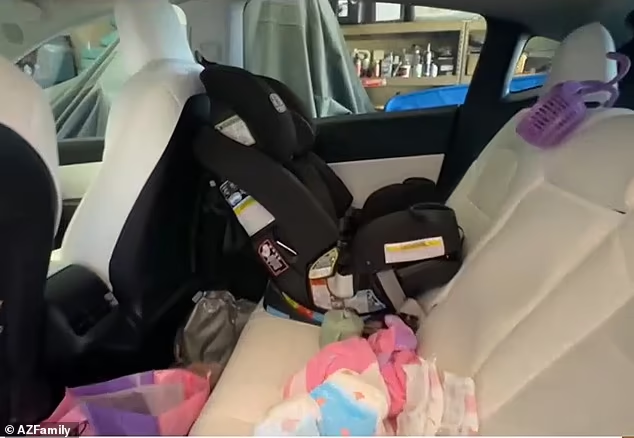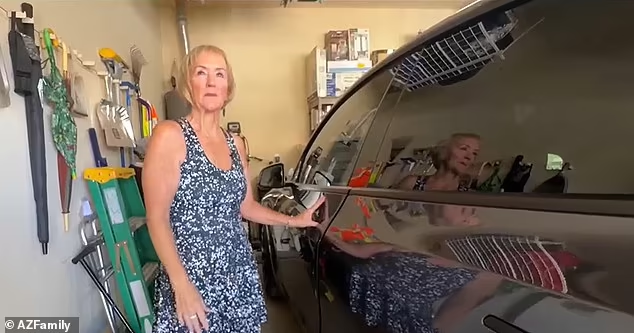Recent incidents involving Tesla vehicles have raised serious safety concerns after multiple reports of occupants being trapped inside due to electric door failures. These events, occurring in scorching temperatures, have put a spotlight on potential design flaws and emergency response challenges associated with the popular electric vehicles.

In a harrowing incident in Scottsdale, Arizona, a 20-month-old toddler was trapped inside a Tesla Model Y when the vehicle’s battery unexpectedly died, rendering the electric doors inoperable. The child’s grandmother, Renee Sanchez, had just strapped the baby into the back seat when she discovered she couldn’t access the car.
“I closed the door, went around the car, get in the front seat, and my car was dead,” Sanchez recounted. “I could not get in. My phone key wouldn’t open it. My card key wouldn’t open it.”
Faced with rising temperatures in the Arizona heat, Sanchez called 911 for emergency assistance. The responding firefighters initially struggled with the unfamiliar Tesla design, stating, “We can’t get in these cars.” Eventually, they resorted to breaking a window to rescue the child, who was becoming distressed by the commotion.

This incident wasn’t isolated. In another part of Phoenix, a woman named Diane found herself trapped in her 2021 Model Y due to a similar battery failure. Despite the car being fully charged, all systems shut down, leaving her unable to open windows or unlock doors. Fortunately, she discovered a hidden emergency lever that allowed her to escape.
These events follow a tragic incident in February where Angela Chao, sister-in-law of Senate Minority Leader Mitch McConnell, died after being unable to free herself from a Tesla SUV that had driven into a pond on her Texas ranch.
The recurring nature of these incidents has raised questions about Tesla’s design and safety features. Drivers attempting to open a dead Tesla must navigate a complex process involving locating a specific part of the car, accessing hidden cables, and using a jump starter just to open the hood.
Sanchez emphasized the need for better education and preparation for first responders dealing with Tesla vehicles. “They need to educate the first responders because they had no idea,” she said. “They were as much in the dark as I was.”

The incidents have also highlighted the potential dangers of relying solely on electronic systems for critical functions like door operations, especially in extreme weather conditions. In Arizona, where temperatures have recently reached 115 degrees Fahrenheit, being trapped in a car can quickly become life-threatening.
Tesla’s response to these incidents has been limited. While the company’s vehicles are known for their innovative features and performance, these safety concerns could potentially impact consumer trust and sales.
As electric vehicles become more prevalent, these incidents underscore the importance of robust safety measures and emergency protocols. They also raise questions about the need for standardized emergency access procedures across all electric vehicle manufacturers to ensure first responders can quickly and safely rescue occupants in critical situations.

While Tesla vehicles continue to be praised for their performance and technology when functioning correctly, these incidents serve as a stark reminder of the potential risks when systems fail. As one affected owner put it, “I give Tesla props. When it works, it’s great. But when it doesn’t, it can be deadly.”
As the automotive industry continues its shift towards electric vehicles, addressing these safety concerns and ensuring foolproof emergency access will be crucial for maintaining public trust and preventing potential tragedies.
Dailymail.com



